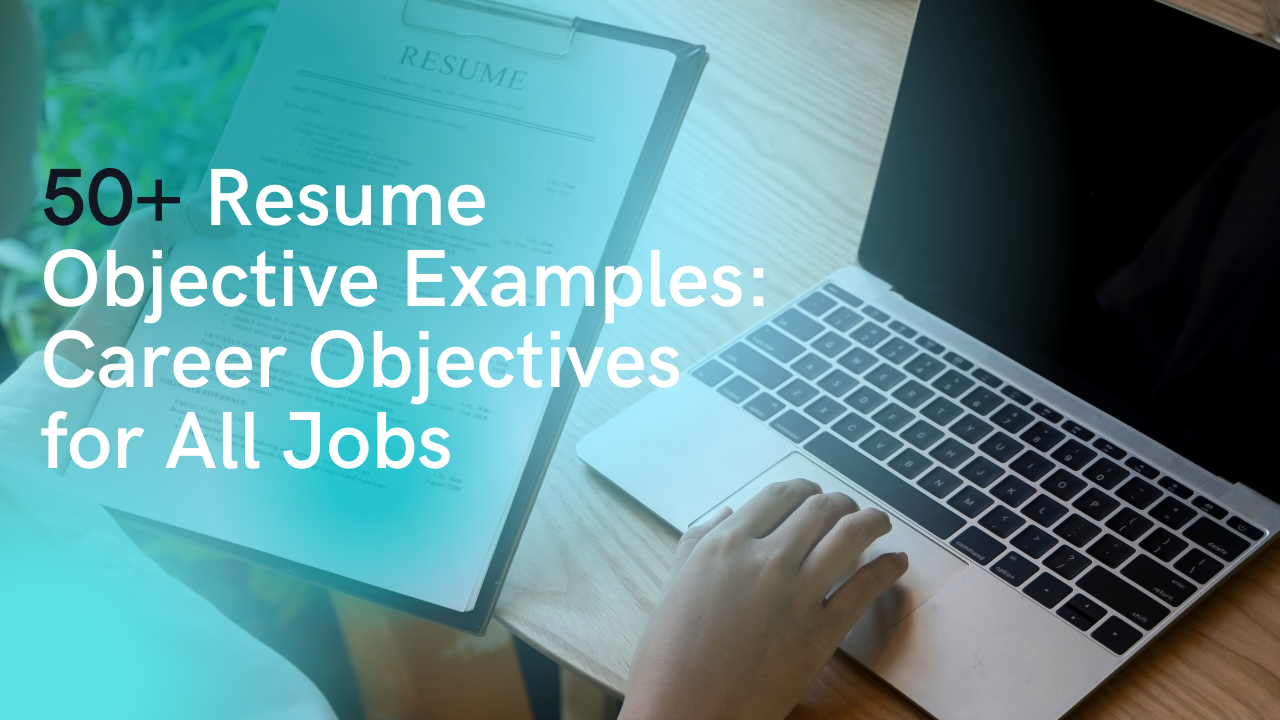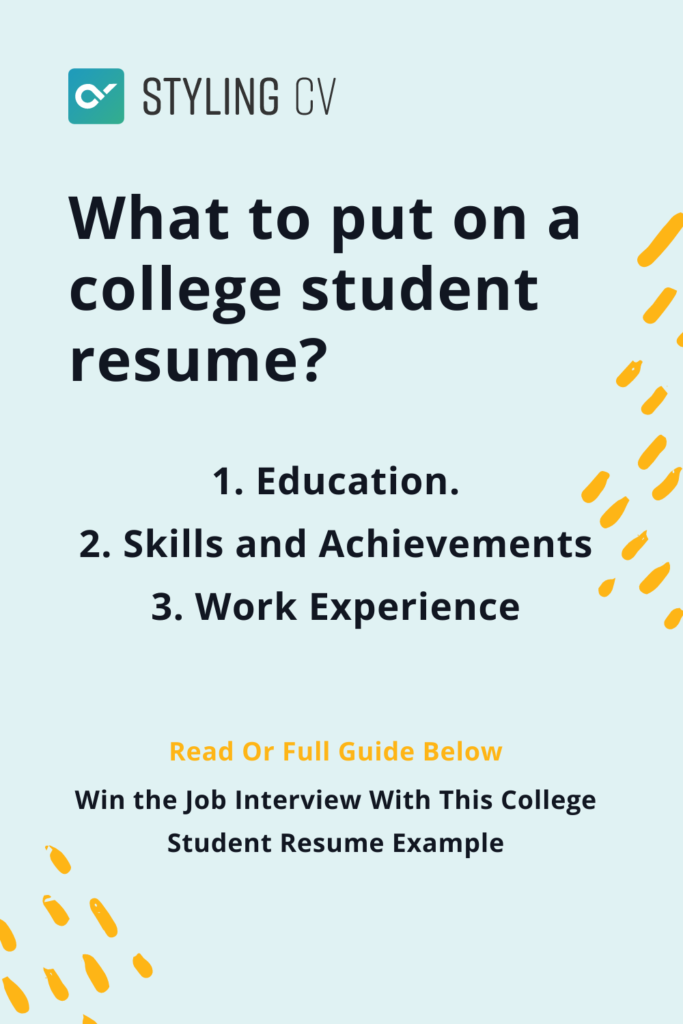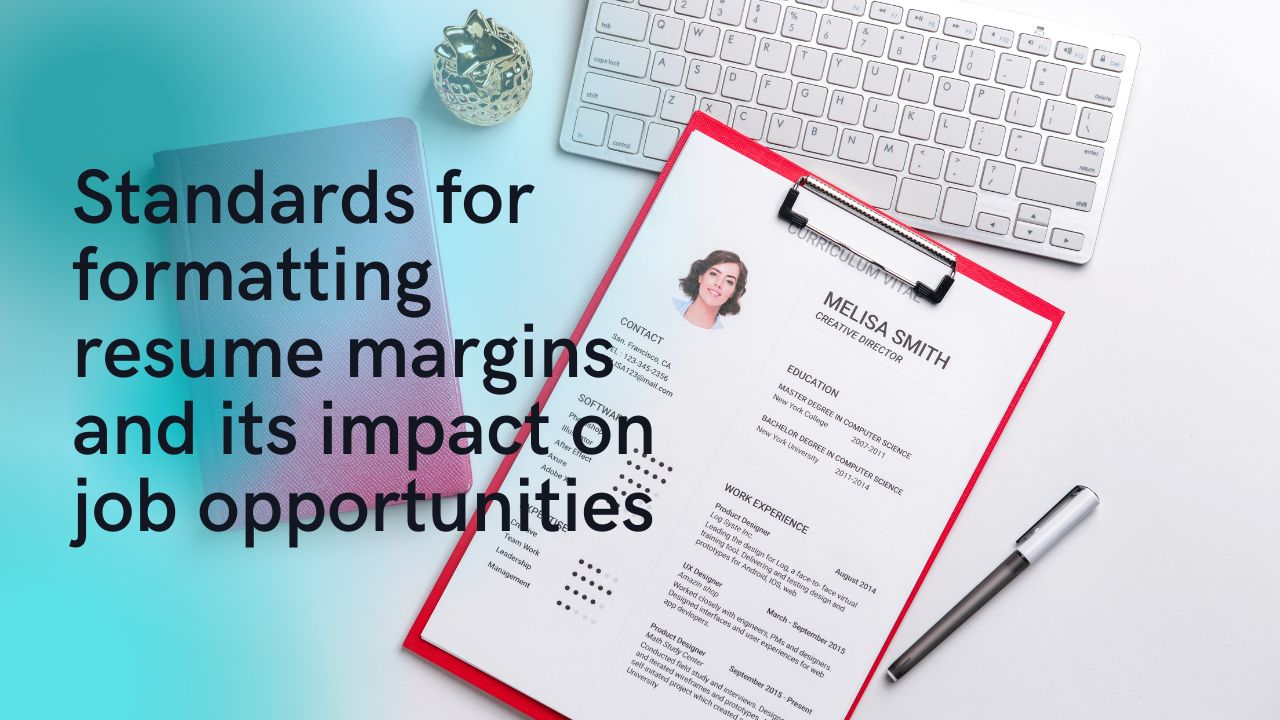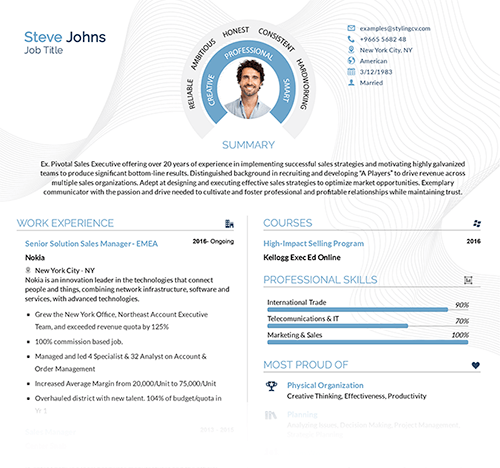
Está a punto de aprender a redactar un currículum de estudiante estelar que le conseguirá entrevistas. ¿Qué aprenderá de este artículo? Cómo hacer un currículum de estudiante.Buenos consejos para construir...
Ayuda para el curriculum vitae - Cómo hacer un currículum de estudiante para ganar la entrevista de trabajo | Ejemplo de currículum de estudiante
Obtenga su currículum gratis ahoraCómo hacer un currículum de estudiante para ganar la entrevista de trabajo | Ejemplo de currículum de estudiante
Está a punto de aprender a redactar un currículum de estudiante estelar que le conseguirá entrevistas. ¿Qué aprenderá de este artículo? Cómo hacer un currículum de estudiante. Buenos consejos para elaborar un currículum de estudiante universitario. Ejemplos explicativos para cada sección del currículum de estudiante. Cómo redactar una carta de presentación de estudiante...
albahaca
Especialista en contenidos


Está a punto de aprender a redactar un currículum de estudiante estelar que le conseguirá entrevistas.
¿Qué aprenderá de este artículo?
- Cómo hacer un currículum de estudiante.
- Buenos consejos para elaborar un currículum vitae para un estudiante universitario.
- Ejemplos explicativos para cada sección del currículum del estudiante.
- Cómo redactar una carta de presentación para estudiantes y ejemplos.
Le mostraremos cómo crear su propio currículum de estudiante universitario con habilidades y logros, así como educación y experiencia.
El secreto está a la vista: Esta guía tiene todas las respuestas para los estudiantes que quieren más oportunidades laborales.
Ahora, ¡manos a la obra con su currículum de estudiante! Hay tres formas principales de destacar entre la competencia:
Destacando las habilidades y los logros, describiendo la formación y la experiencia de forma convincente y utilizando técnicas de diseño excelentes como el espacio en blanco.
Para ayudarle a pasar menos tiempo escribiendo redacciones sobre por qué se merece el puesto, le ofrecemos ejemplos de currículos de estudiantes para que los utilice como guía.
Para cada categoría de su currículum (educación, habilidades y logros, experiencia laboral), inspírese en estos ejemplos.
Repasaremos qué hace que cada uno de ellos sea eficaz a su manera para que usted pueda seguir su ejemplo a la hora de crear un currículum de estudiante universitario impresionante.
Leer más: Redactar un currículum sin experiencia laboral
¿Cómo empezar a redactar tu currículum de estudiante?

Redactar un currículum de estudiante puede ser difícil, sobre todo si nunca lo ha hecho antes.
He aquí la buena noticia: ¡no importa por dónde empiece siempre que siga escribiendo y se deje tiempo suficiente para editar su trabajo más adelante!
El primer paso es crear un esquema que incluya cada sección de información sobre su educación, habilidades y logros, y experiencia laboral.
Puede hacer un esquema en cualquier programa de tratamiento de textos, pero si necesita ayuda para empezar, ¡consulte la plantilla de currículum para estudiantes que le proporcionamos a continuación!
Una vez que haya creado su esquema, es hora de empezar a escribir.
Mantenga toda esta información organizada en secciones para que los responsables de contratación no se confundan con lo que están leyendo.
No importa si está creando un currículum de estudiante en prácticas, un currículum de estudiante de secundaria para un trabajo a tiempo parcial o un currículum de estudiante de posgrado para su primera oportunidad de empleo.
Las mismas normas se aplican al formato del currículum de todo buen estudiante.
Puede iniciar sesión/crear una cuenta en nuestro sitio web y obtener acceso a herramientas especiales como el creador de currículos.
¿Qué poner en el currículum de un estudiante universitario?
Las siguientes secciones pueden incluirse en su currículum de estudiante:
- Educación. Si todavía estás en la universidad, esta sección debe incluir tu escuela secundaria y tu programa de estudios actual (especialidad).
- Habilidades y logros. Aquí es donde la mayoría de los currículos de los estudiantes se quedan cortos porque no destacan sus habilidades ni se esfuerzan lo suficiente por describirlas en el papel. Hay algunas formas de hacerlo con eficacia: utilizando verbos de acción y estadísticas, y usando una combinación de ambos.
- Experiencia laboral. Si no tienes ninguna experiencia laboral que enumerar en tu currículum como estudiante, no incluyas esta sección. Otros estudiantes incluirán los veranos que han pasado trabajando en diversas empresas o las prácticas que han realizado durante los estudios. También puedes mencionar aquí los puestos de voluntariado, si procede. La educación es la parte más importante de un currículum de estudiante.

No intente llenar espacio aquí enumerando todas las clases y cursos que ha cursado desde preescolar.
En su lugar, céntrese en sus logros académicos, que pueden servir como indicadores de su éxito futuro en el mundo laboral.
Estos son los mejores consejos sobre el currículum que deberías seguir:
¡El currículum de estudiante en el que ha estado trabajando está casi terminado! Una vez terminado el esquema y el contenido del cuerpo, es hora de diseñar la maqueta.
Este paso ayudará a que su currículum destaque entre los de otros estudiantes que parecen creados en Microsoft Word con la configuración predeterminada.
Diseñar un currículum de estudiante atractivo puede hacerse rápidamente si sigue estas sencillas técnicas de diseño:
- Utiliza una plantilla de curriculum vitae para estudiantes. Asegúrate de elegir una que incluya todas las secciones que necesitas para tu información.
- Enumera las palabras clave relevantes en negrita donde puedan encontrarse al menos tres veces a lo largo de tu documento, especialmente cerca de la parte superior de cada sección (educación, habilidades y logros). Recuerde utilizar verbos de acción como "organizado" y "gestionado" en lugar del término más general, "era".
- Utiliza viñetas para separar la información. En lugar de forzar cada elemento en un párrafo (lo que hará que tu currículum parezca una redacción), utiliza esta técnica de formato para enumerar los logros relevantes o las declaraciones que se han hecho sobre ti en puestos anteriores. Esta es también una buena manera de que los estudiantes con poca experiencia laboral muestren lo que han aprendido en sus trabajos voluntarios y a tiempo parcial.
Leer más: Cómo redactar un currículum
Cómo poner la información de contacto en un currículum de estudiante.
En su currículum de estudiante, enumerar la información de contacto puede parecer una tarea sencilla.
No siempre es tan sencillo como usted supone, ¡sobre todo si intenta que todo sea lo más breve posible!
Los siguientes son los componentes del encabezado de su currículum:
Nombre: Asegúrese de incluir su nombre y apellidos (los legales, no un alias).
Dirección: Esta sección puede omitirse si sólo solicita trabajos locales; sin embargo, ¡es mejor mantener el encabezado coherente en todos sus documentos de currículum de estudiante si es posible!
Número(s) de teléfono: Incluir varios números de teléfono no es una mala idea - si su número de contacto principal cambia, siempre puede actualizar los otros con la información del nuevo número.
Dirección de correo electrónico: Puede que sea aquí donde los estudiantes se equivoquen en sus currículos, ya que acaban indicando sólo una dirección de correo electrónico (y probablemente sea una versión incorrecta o desactualizada).
Su currículum debe mostrar al menos dos direcciones de correo electrónico: una de trabajo y otra personal.
Manejos de los medios sociales: Puede que las redes sociales no sean necesarias para un currículum de estudiante, pero podrían ayudarle a conseguir el trabajo si su presencia social es fuerte. Por ejemplo, alguien con miles de seguidores en Twitter podría utilizar su mango para promocionarse ante futuros empleadores.
Consejo: Recuerde que el diseño de su currículum de estudiante universitario no importará si nadie lo lee. Debería empezar por adaptar cada documento a la empresa o al puesto que solicita, para que sepan qué habilidades y cualificaciones les convienen más.
Para ello, investigue el sitio web de cada empleador antes de crear su currículum de estudiante: debe contener información sobre su empresa que pueda utilizar como palabras clave en su documento.
Leer más: Su guía de 10 pasos para redactar el currículum perfecto
Cómo escribir un objetivo para un currículum de estudiante

Redactar el objetivo de un currículum de estudiante es importante porque indica a los empleadores qué tipo de trabajo busca y por qué. Esta sección rápida debe colocarse cerca de la parte superior de su documento, después de su información de cabecera pero antes de cualquier otra sección - ¡lo ideal es que tenga menos de cinco líneas!
He aquí algunos ejemplos:
- Obtener un puesto de trabajo de nivel inicial en marketing.
- Obtener un puesto de asistente administrativo.
- Obtener un puesto en ventas.
Un consejo que debes recordar es que no debes utilizar demasiadas palabras de moda o términos específicos del sector, ya que los empleadores podrían suponer que sólo sabes hacer el trabajo para el que te están contratando (y nada más). Si esto ocurre, el objetivo de tu currículum de estudiante servirá más como introducción que para conseguir entrevistas.
Busco trabajar en su empresa porque creo que mis habilidades, calificaciones y educación diversa me hacen un fuerte candidato para el trabajo.
Cómo enumerar la educación en un currículum de estudiante: Métodos y ejemplos
Esta sección depende en gran medida tanto de su nivel de educación formal como de su relevancia para el puesto de trabajo que solicita.
En esta sección, hablaremos de cómo enumerar su formación en un currículum de estudiante y qué información debe incluirse en cada una de esas secciones, ¡así como algunos ejemplos que pueden servirle de inspiración!
El aspecto más importante de cualquier formato de currículum de estudiante será, con diferencia, si tu formación es relevante para el puesto que solicitas. Si no lo es, tu sección de educación podría tener un aspecto muy diferente al que tendría si lo fuera.
Leer más: Guía para la redacción de currículos cronológicos
A continuación se ofrecen algunos consejos sobre la información que puede incluirse en cada parte de esta sección:
Título/Certificado: Asegúrese de comenzar con el título o certificado que haya recibido (por ejemplo, Licenciatura en Artes). Si tiene varios títulos o certificados, aquí es donde deben ir.
Especialidad/Concentración/Campo de estudio: Incluya el nombre de su(s) especialidad(es) y cualquier concentración si es relevante para el puesto que solicita - ¡aunque no todos los empleadores lo consideren útil! Esta sección también podría incluir información sobre proyectos o investigaciones que haya realizado como parte de sus estudios, si son relevantes para el puesto.
Fecha de graduación: Si es posible, incluya esta sección justo después de la información sobre su titulación - ¡con incluir el mes y el año debería ser suficiente! También podría ir en la parte superior o inferior de esa sección en concreto.
GPA/Puntuación SAT/Puntuación ACT: Aquí es donde debe anotar su GPA, puntuación SAT o puntuación ACT. Si el empleador indica que su candidato ideal necesita tener un determinado número de puntos en estas categorías, ¡asegúrese de incluir esta información!
styling CV es uno de los sitios líderes en el campo de la creación de CV y le ayuda a prepararlo en todos los aspectos.
Ejemplo de la sección de educación:
Licenciada en Artes (septiembre de 2016) con especialización en Negocios y Marketing con concentraciones en Estrategia y Analítica y Emprendimiento.
Ejemplo de curriculum vitae de estudiante Sección de experiencia laboral Entradas
Esta sección depende totalmente de la experiencia laboral que tenga.
Para los estudiantes sin ninguna experiencia previa relevante, esto podría ser inexistente o muy corto. Por otro lado, alguien que haya realizado unas prácticas durante sus estudios universitarios probablemente necesitará incluir más entradas que un estudiante con otro tipo de experiencia.
He aquí algunos ejemplos:
Mantenimiento: Trabajó como miembro del personal de mantenimiento de la empresa XYZ, realizando tareas diarias como la limpieza y la reposición de suministros, trabajando ocasionalmente con maquinaria o equipos que debían ser reparados.
Asistente Estudiantil/Prácticas: Trabajé como asistente en la oficina de ABC Corporation en el campus, ayudando a los estudiantes que tienen preguntas sobre sus cuentas - este papel me exigió estar orientada a la investigación y ser detallista. Realicé unas prácticas de estudiante en la empresa XYZ, trabajando con las nóminas de los empleados de ABC Corporation - este papel requería grandes habilidades de análisis de datos, así como la capacidad de comunicarse eficazmente con los clientes por correo electrónico o por teléfono.
Ejemplo de mantenimiento:
Responsable de la gestión del inventario en el sitio, asegurando que los suministros y el equipo estén bien abastecidos para los empleados - ocasionalmente trabajando con maquinaria o herramientas.
¿Cómo poner las habilidades en un currículum de estudiante?
Esta es quizás la sección más importante de todas, porque es probablemente lo que los directores de recursos humanos mirarán primero. Si no tienes mucha experiencia para escribir en tu historial laboral, esta podría ser la parte más importante de tu currículum.
Debe incluir aptitudes relevantes que se apliquen directamente a la descripción del puesto de trabajo o al puesto al que opta; si no tiene ninguna aptitud que se ajuste a lo que están buscando, puede que le resulte difícil conseguir entrevistas de inmediato.
Estos son algunos ejemplos de habilidades para el currículum de los estudiantes:
- Microsoft Office (por ejemplo, Word, Excel)
- Comunicación (por ejemplo, enviar correos electrónicos a los clientes o redactar informes)
- Habilidades interpersonales (por ejemplo, establecer relaciones o trabajar en equipo)
Para cada una de las habilidades que desee incluir, escriba un ejemplo de cuándo y cómo se utilizaron. Podría ser algo así:
- Microsoft Office (Word): Creé informes para clientes de ABC Corporation sobre temas como el análisis de datos de investigación y las estrategias de marketing; esta función me exigía presentar información compleja de forma clara y concisa.
- Comunicación (correo electrónico): Me comunicaba con los clientes a través del correo electrónico para responder a sus preguntas sobre la facturación - este papel requería que respondiera rápida y eficazmente, así como que utilizara la gramática y la ortografía adecuadas en todo momento.
- Habilidades interpersonales: Capacidad para trabajar eficazmente en equipo o por mi cuenta: confío en mi capacidad para comunicarme con los demás y llevarme bien en la mayoría de los entornos de trabajo, lo que conduce a un flujo de trabajo fluido.
Ejemplo de carta de presentación de un estudiante
Puede utilizar este ejemplo de carta de presentación como guía para redactar sus propias cartas de presentación para estudiantes.
Estimado director de contratación, le escribo en respuesta al anuncio que ha publicado recientemente en CareerBuilder para un puesto de nivel inicial en ABC Corporation. Gracias a mi experiencia laboral y a mis prácticas, he desarrollado una gran capacidad de comunicación, de resolución de problemas y de gestión del tiempo que me resultará muy útil para este puesto. Estoy seguro de que mis cualificaciones se ajustan a sus necesidades. No dude en ponerse en contacto conmigo en el (123) 555-1234 o en jane@gmail.com si desea obtener más información sobre mi candidatura. Gracias por considerarme como candidata para este puesto, y espero tener noticias suyas en un futuro próximo. Atentamente, Jane Smith
cómo escribir una carta de presentación para estudiantes.
- Diríjase al director de contratación por su nombre.
- menciona el puesto que solicitas y dónde lo has visto anunciado (CareerBuilder, en mi caso).
- Exponga claramente por qué sus cualificaciones se ajustan a sus necesidades.
- Consejos para el formato del currículum: Asegúrate de utilizar un formato formal al redactar tu currículum, es decir, nada de viñetas, grandes bloques de texto o emoticonos.
- Utiliza un tipo de letra sencillo como Times New Roman y mantén el tamaño en 11pt.
- Asegúrese de que alguien lo revise antes de enviarlo: pregúntele si pudo leer y comprender fácilmente cada sección del currículum.
- No incluya información personal como la raza, el sexo o la religión a menos que sea necesaria para un puesto específico.
Aquí tienes un resumen de cómo redactar un currículum de estudiante:
- Utilice un formato formal e incluya los conocimientos pertinentes.
- Describa su formación y experiencia en términos sencillos que sean fáciles de entender para los responsables de la contratación.
Como puedes ver, redactar un currículum vitae de estudiante impresionante consiste en tomarse el tiempo necesario para explicarse con claridad.
Preguntas frecuentes sobre " Cómo hacer un currículum de estudiante"
1-¿Cómo puede un estudiante hacer un currículum sin experiencia?
5 sugerencias para redactar un CV de estudiante sin experiencia
- Muestre su educación. Hacer hincapié en su formación escolar es un método excelente para resaltar sus habilidades, aficiones y antecedentes si carece de experiencia laboral.
- incluir conocimientos especializados que sean pertinentes.
- Describa sus habilidades.
- Añada una sinopsis.
- Emplee una plantilla.
2-¿Qué debe escribir un estudiante en su currículum?
Qué poner en el currículum de estudiante:
- Título y resumen ejecutivo.
- Trabajo de curso.
- Prácticas.
- Nota media, honores y reconocimiento.
- Experiencia en voluntariado.
- Actividades, iniciativas, grupos y clubes.
- Experiencia laboral.
3-¿Qué habilidades debo poner en mi currículum como estudiante?
He aquí un puñado de las principales habilidades que prácticamente todos los empleadores valorarán en un currículum de estudiante:
- Comunicación escrita y verbal.
- Trabajo en equipo.
- Adaptabilidad.
- Puntualidad.
- Organización.
- Flexibilidad.
- aptitud para solucionar problemas.
- Motivación.
4-¿Por qué son importantes las competencias para los alumnos?
El entrenamiento y la mejora de las habilidades de los alumnos contribuye a su desarrollo emocional. Aprender nuevas habilidades requiere que los alumnos estén dispuestos a explorar. Puede que se enfrenten a pérdidas y decepciones por el camino, pero esas lecciones les ayudarán a desarrollar una actitud de "no rendirse nunca" y la capacidad de fracasar con elegancia.
5-¿Cómo redactar un resumen de currículum sin experiencia?
Su resumen profesional debe incluir uno o dos adjetivos que definan su ética de trabajo, su grado de formación, sus aptitudes aplicables y sus aficiones o intereses profesionales, ya que carece de experiencia laboral. Cada resumen profesional que escriba debe estar personalizado para el puesto concreto que busca.
Artículos relacionados
Construya su currículum en 10 minutos
Utilice plantillas de currículum profesionales probadas en el terreno que siguen las "reglas del currículum" exactas que buscan los empleadores. Crear mi currículum
CONSTRUIR MI CURRICULUM VITAE AHORA




